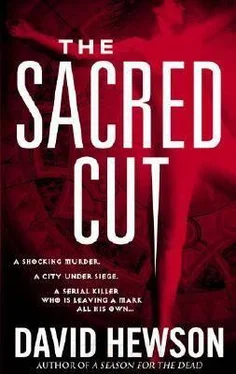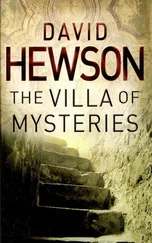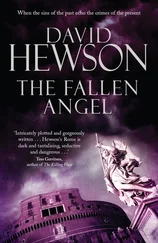Leapman knew. At least that’s what she suspected. Costa thought about the way the FBI agent had acted ever since that first unexpected meeting in the Pantheon. Some unspoken knowledge seemed to underpin everything he did.
“And the ziggurat?”
She keyed up something on the computer: a page full of technical archaeological jargon and three photos of a mound-like site.
“A ziggurat’s a kind of ancient temple in Iraq. My guess is it’s what Kaspar used as a base for his mission. There’s nothing in any of the official records, of course. But a UN archaeological inspection team was sent into Iraq last summer to try to assess the damage to historical monuments caused by two wars and the Saddam regime. I found this…”
The page was about a temple close to a place called Shiltagh, near the banks of the Euphrates between Al Hillah and Karbala, slap in the middle of ancient Mesopotamia. It was less well known-or, as the report put it, less well documented-than the famous ziggurat at Ur. But it had been damaged during the first Gulf War. What must once have been a low, stepped pyramid was now a crumbling, wrecked mound, its original outline only faintly discernible. Mortar craters pockmarked the broad ceremonial staircase entrance.
“Looks like it must have been a hell of a battle,” he murmured.
“Exactly,” she agreed. “This isn’t collateral damage. It’s not aerial bombardment either. There was one big, vicious firefight here and the report dates the damage to 1991.”
“So why’s this place special?”
“For two reasons. The allied troops never got this far in 1991. There couldn’t have been a pitched battle between conventional soldiers here.”
“All the same-”
She hit a key and said, interrupting him, “Look at the pattern, Nic. The sacred cut. It’s everywhere. This is where he gets it from.”
She keyed up a photo of what he assumed was the subterranean interior of the ziggurat. The walls were peppered with bullet marks. Huge chunks had been carved out of the masonry around the door as if someone had tried to fight off an entering attacker. But the pattern was unmistakable: carved stucco on the walls, repeating itself in every direction. And elsewhere too. There were what looked like spent munitions boxes, wrecked equipment. At the centre was a pile of dark material, clumped together in a heap.
She hit the zoom key on the photo. The material became clearer: bales of ancient camouflage webbing.
“This has the pattern too,” she said. “They’d probably use it for making sleeping quarters, getting a little privacy. It’s just a coincidence, of course. The webbing’s got that shape because that’s how it’s made. Maybe it makes it strong, I don’t know. But, what with the walls and the webbing, I imagine that’s all he saw when they came for him, when he watched the rest of his team getting taken, killed, all around him. On the walls. In the quarters they’d made for themselves. Can you imagine what that must have been like?”
The floor, the low, curving ceiling, reminded Nic of what he’d seen painted in blood in the tiny apartment that stank of meat, just a few hours ago.
“I imagine it wouldn’t leave you. Ever.”
“Right,” she agreed. “So what do you do? You live that nightmare over and over again until you understand what caused it. You get free. You hunt people down in the same kind of sacred places and see if that same pattern gives you any answers.”
She looked into his eyes, not flinching. “Do you think he’s found some answers? Do you think he’s even close?”
He thought of the single word written in blood in the dead woman’s apartment. “Not close enough. When he killed that woman he wrote something, over and over, underneath the pattern. A question. ”Who?“ ”
It didn’t seem to make any sense to her either.
“He’s been killing people he knew,” she said. “Why would he ask that?”
“I don’t know. You said they’d all been strangled with a cord?”
“That’s right,” she agreed.
“No, it’s not. He didn’t use cord. At least not in the Pantheon. It was this stuff. Webbing, wrapped up into a ligature. Teresa held that information back. Leapman is going wild. It was the same with the woman we found today. Teresa got positive ID back from forensic on the first sample. This is US military issue webbing. You can’t buy it retail. And it’s not from years ago either. This particular type wasn’t manufactured until last year. As far as we can work out, the only place it’s been used in the field is Iraq.”
“Whoa.” She sighed. “Now you’re the one who’s going too fast.”
He had to ask. “If this man is that consistent, surely he would have used it on the others? Did he?”
“I don’t know.”
Costa said nothing.
She squinted at him, then pointed at the computer. “You think I’m holding out on you? After this?”
“No.” He laughed. “Not at all.”
Her fingers flew on the keyboard. “Let’s see. I’ve got the standard reports on here anyway. The ones we sent round to you.”
Carefully, one by one, they went through each of the case file summaries. All were brief, reduced to just a few pages.
“This is ridiculous,” Emily snapped. “Why the hell didn’t I see this in the first place? Why didn’t your people?”
“You’re not a detective. And we didn’t have the time. Remember?”
“Sorry.”
She’d left the last document on the screen open. It was the report on her own father’s death. Now that he thought about it, the omission almost screamed at them from the screen. The summary gave a cause of death-strangulation-but contained no forensic data on the material used by the murderer.
“That can’t be normal.” Emily pointed at the screen. “Just a cause of death. Nothing about the actual ligature itself. Forensic would have information there, wouldn’t they? Something that could be useful?”
“Absolutely. A couple of years ago Teresa Lupo coaxed some skin samples out of forensic when they were about to give up on a domestic we had. When they took a good look again they had proof the husband was responsible. He’d pulled the cord so tightly he’d left material there himself.”
Emily glowered at the screen. “Watch this. I still have some clearance.”
She hit the keys. The modem inside the machine cracked and whistled. Costa watched her thrash her way through more security screens than he’d ever seen in his life. Finally she got to where she wanted: a report topped by the FBI logo. The full file, of which until then he’d only seen the summary.
“Forensic, forensic, forensic…” she whispered. “ Shit !”
She’d scrolled down until she found the section. It contained just four words: PENDING. REFER TO HIGHER AUTHORITY.
“You could…” he began to say.
“… try the others? You bet.”
She bent down over the computer, head in hands, furious. Costa gingerly put a hand on her shoulder, then removed it.
“Emily?”
“Say something useful. Say something I want to hear.”
“You just made a discovery. You’ve just worked out what those people were really killed with. Not just ”cord.“ The same thing we found here. US military webbing. Maybe he brought it with him. Maybe he acquired it here. Either way, we know. Why else?”
She took her head out of her hands and smiled brightly at him. “Christ, you’re right, too. It’s the dog that didn’t bark.”
Costa looked baffled.
“I’ll explain later, Nic. Now what do we do?”
The last thing she wanted, he thought. “We leave this till the morning. We continue this conversation with other people around.”
“Is that what you want?” At least she didn’t argue. There weren’t many options open to them.
Читать дальше










